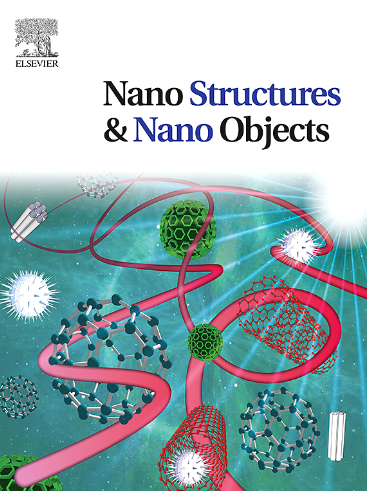Review on titanium oxide (TiO2) nanomaterials in multidomain investigations
IF 5.45
Q1 Physics and Astronomy
引用次数: 0
Abstract
The unique properties of titanium led to the rigorous research of its nanoscale composite and alloy derivatives in biomedicine and photocatalysis. Despite this, more refinement is necessary in the surface modification of titanium nanomaterials (NMs) for the advancement of property and to reduce detrimental responses. A synthetic strategy for titanium NMs is planned in physical, chemical, and biochemical routes to accomplish desired properties and targeted implementation. Titanium oxide is studied as zero-dimensional, higher-dimensional, and different polymorphs. The structural and surface analysis is evaluated by several advanced techniques. Nanotechnology aims to produce titanium materials with nanoscale dimensions, modified surfaces, chemical stability, scalability, and high mechanical strength. Thus, it can act as the best candidate for multimode research. However, the invaluable number of literature summaries focused on the genotoxicity, bio-accumulation, and ecotoxicity resulting after prolonged implementation of the titanium oxide NMs, this can be combated with surface manipulation ability provided by the nanomaterial through the decoration of the surface with inorganic and organic moieties which enhanced the overall efficiency of the material. The current review is focused on the synthesis of TiO2 NMs, structural evaluations, toxicity, surface modification, and its implementations in the field of medicine, material development, and pollution control, including industrial applications such as cosmetics, food safety, and energy storage. Hence defining the titanium nanomaterial as a versatile material for multidomain research.
多领域研究中的氧化钛 (TiO2) 纳米材料综述
本文章由计算机程序翻译,如有差异,请以英文原文为准。
求助全文
约1分钟内获得全文
求助全文
来源期刊

Nano-Structures & Nano-Objects
Physics and Astronomy-Condensed Matter Physics
CiteScore
9.20
自引率
0.00%
发文量
60
审稿时长
22 days
期刊介绍:
Nano-Structures & Nano-Objects is a new journal devoted to all aspects of the synthesis and the properties of this new flourishing domain. The journal is devoted to novel architectures at the nano-level with an emphasis on new synthesis and characterization methods. The journal is focused on the objects rather than on their applications. However, the research for new applications of original nano-structures & nano-objects in various fields such as nano-electronics, energy conversion, catalysis, drug delivery and nano-medicine is also welcome. The scope of Nano-Structures & Nano-Objects involves: -Metal and alloy nanoparticles with complex nanostructures such as shape control, core-shell and dumbells -Oxide nanoparticles and nanostructures, with complex oxide/metal, oxide/surface and oxide /organic interfaces -Inorganic semi-conducting nanoparticles (quantum dots) with an emphasis on new phases, structures, shapes and complexity -Nanostructures involving molecular inorganic species such as nanoparticles of coordination compounds, molecular magnets, spin transition nanoparticles etc. or organic nano-objects, in particular for molecular electronics -Nanostructured materials such as nano-MOFs and nano-zeolites -Hetero-junctions between molecules and nano-objects, between different nano-objects & nanostructures or between nano-objects & nanostructures and surfaces -Methods of characterization specific of the nano size or adapted for the nano size such as X-ray and neutron scattering, light scattering, NMR, Raman, Plasmonics, near field microscopies, various TEM and SEM techniques, magnetic studies, etc .
 求助内容:
求助内容: 应助结果提醒方式:
应助结果提醒方式:


